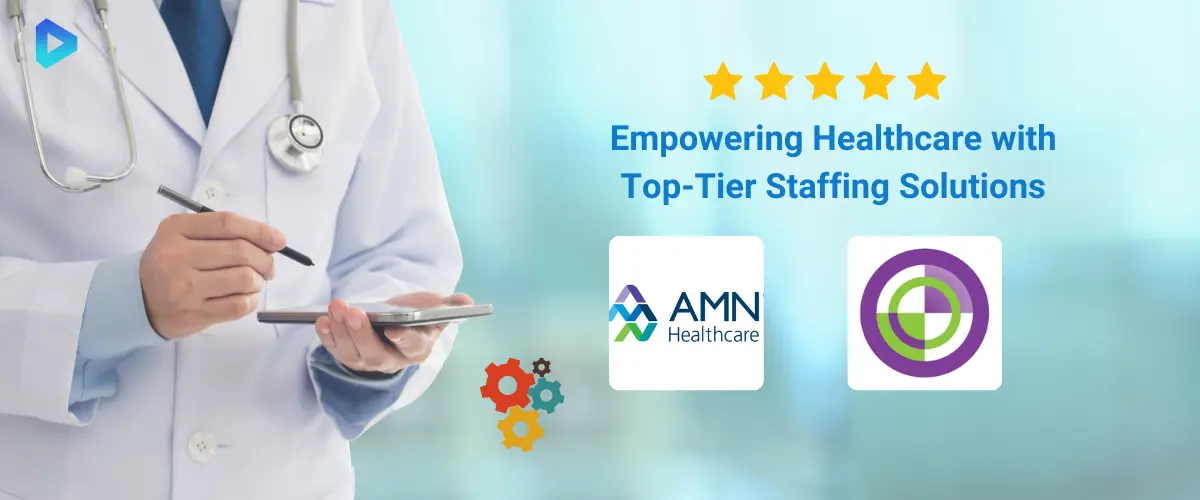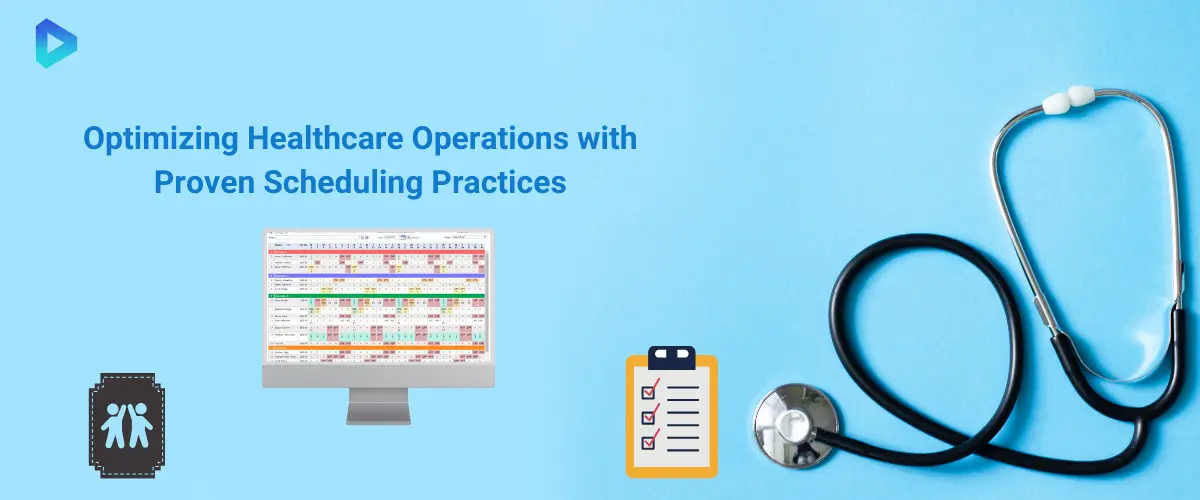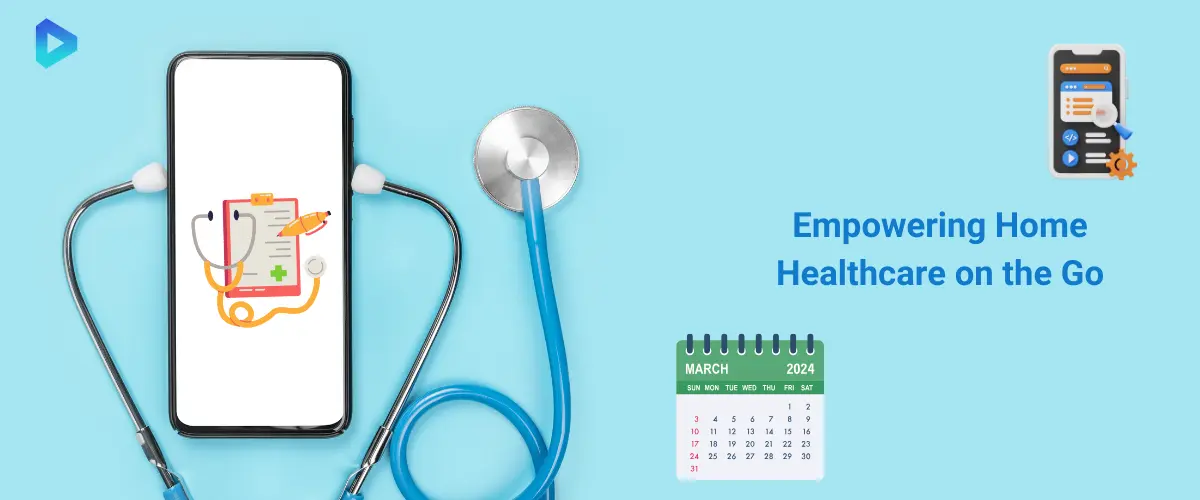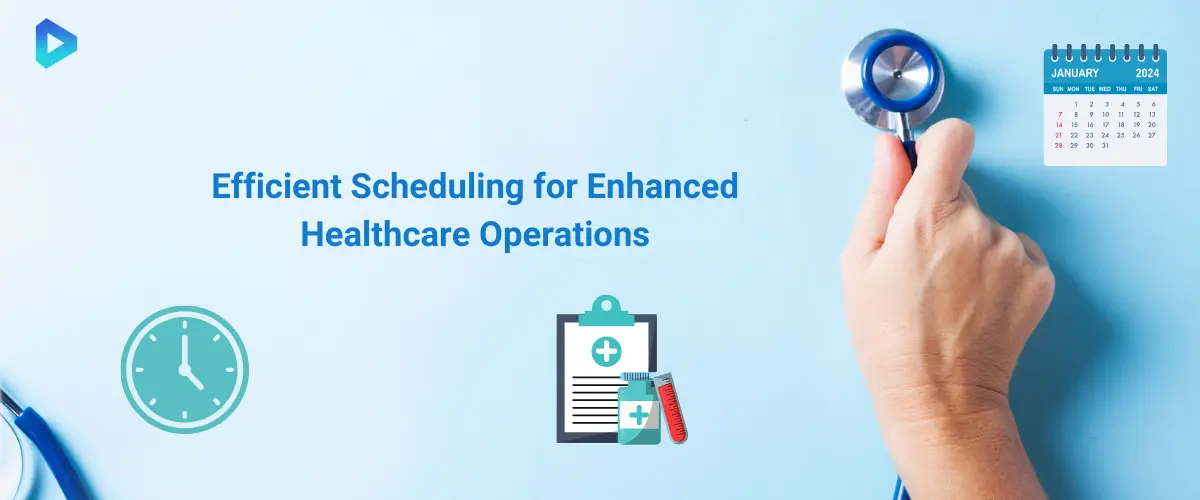Efficient healthcare staff scheduling is crucial for the 24/7 operations of the healthcare industry. With diverse roles to coordinate, seamless scheduling is necessary to ensure smooth personnel management. This section delves into the intricate challenges faced by healthcare facilities in managing their workforce. One major hurdle is the constant need for round-the-clock coverage, as healthcare services cannot afford downtime. This requires detailed scheduling to ensure there are always enough qualified staff members available.
Healthcare facilities face a changing work environment. Emergencies and fluctuations in patient volume often require quick adjustments to staffing levels. Balancing the skills and expertise of healthcare professionals with patient demand adds another layer of complexity. Nurses, physicians, and support staff have different skills and specialties. It's crucial to assign the right personnel to specific roles.
Additionally, compliance with labor laws, union agreements, and internal policies adds a layer of intricacy to scheduling. Balancing employee preferences, like flexible hours, with the operational needs of the healthcare facility is an ongoing challenge. As we look at healthcare staff scheduling, it's crucial to understand these challenges. Innovative solutions, like healthcare staff scheduling software, play a key role in overcoming these obstacles.
Introduction to Staff Scheduling Software
Staff scheduling software is a game-changer in healthcare, making it easier to manage workforce logistics. This section introduces the pivotal role that scheduling software plays in optimizing staffing operations within healthcare facilities.
Staff scheduling software streamlines the process of assigning shifts, managing employee availability, and ensuring adequate coverage across various healthcare roles. The software leverages automation to create efficient schedules, taking into account factors such as employee skill sets, certifications, and compliance with labor regulations.
One key feature of staff scheduling software is its ability to adapt to the dynamic nature of healthcare operations. The software is designed to quickly adapt to unexpected changes in patient volume, staff availability, and other variables. It ensures that the right personnel are deployed promptly and where they are most needed. This flexibility contributes to enhanced patient care, operational efficiency, and overall staff satisfaction.
Significance of Optimized Scheduling in Healthcare Settings
In the intricate landscape of healthcare, we cannot overstate the significance of optimized scheduling. This section delves into the crucial role that efficient staff scheduling software plays in enhancing overall performance and outcomes within healthcare settings.
Optimized scheduling is crucial for ensuring that healthcare facilities operate efficiently, delivering continuous and high-quality patient care. Staff scheduling software, by automating and refining the scheduling process, addresses the versatile challenges inherent in healthcare workforce management. Aligning staff schedules with patient demand and considering skills makes the healthcare system more responsive and agile.
Optimized scheduling directly impacts healthcare professionals' well-being. By promoting a balanced distribution of work hours, minimizing overtime, and accommodating individual preferences, the software supports a healthier work-life balance for staff. This, in turn, fosters job satisfaction and contributes to the retention of skilled healthcare professionals.
Understanding Healthcare Staff Scheduling Software
 Explanation of Functionalities and Features
Explanation of Functionalities and FeaturesExploring healthcare staff scheduling software reveals a range of features that make it a crucial part of workforce management. The designers created this software to efficiently allocate resources and tackle the specific challenges in healthcare settings.
One primary functionality is the automated creation of schedules. The software considers staff availability, skill sets, and regulatory compliance to create efficient and balanced schedules. This not only ensures adequate coverage but also minimizes the risk of errors associated with manual scheduling.
Another key feature is real-time flexibility. Healthcare is inherently dynamic, with fluctuations in patient volumes and unexpected events. The software allows for swift adjustments, automatically updating schedules to meet changing demands. This agility is critical to maintaining a responsive and efficient healthcare workforce.
Communication tools are integral to these platforms, helping seamless interaction among healthcare professionals. Staff can input preferences, request changes, and communicate relevant information, fostering collaboration and transparency.
Tailored Aspects for Healthcare Staffing Needs
Developers customize healthcare staff scheduling software for the unique demands of the healthcare industry, going beyond generic solutions. This section explores how these specialized features cater to the distinctive staffing requirements within healthcare settings.
One prominent aspect is the consideration of healthcare professionals' diverse skill sets and qualifications. The software efficiently aligns staff with specific roles based on their expertise. This ensures that supervisors assign tasks matching the skills of qualified personnel. This not only improves the quality of patient care but also maximizes operational efficiency.
Moreover, healthcare staff scheduling software often integrates intricate rules and algorithms that account for regulatory compliance. The software automates compliance with labor laws, union agreements, and internal policies. This reduces the risk of scheduling errors that may lead to non-compliance issues. This tailored approach mitigates legal and operational risks, providing healthcare facilities with a robust and reliable solution.
Impact on Efficiency and Cost-Effectiveness
Healthcare staff scheduling software significantly improves efficiency and cost-effectiveness, transforming workforce management in the healthcare industry. This section explores how these software solutions contribute to streamlined operations and financial savings.
One of the primary benefits is the optimization of staffing levels. The software uses advanced algorithms to factor in patient demand, staff availability, and required skill sets. This results in schedules that provide sufficient coverage without unnecessary overstaffing. This not only enhances the overall efficiency of healthcare facilities but also minimizes labor costs associated with surplus staffing.
Additionally, scheduling software's real-time flexibility is crucial for responding to changes in patient volumes and unexpected events. By actively adjusting staffing levels as needed, healthcare organizations can maintain optimal efficiency without compromising on the quality of patient care. This flexibility also minimizes the need for costly overtime, contributing to significant savings.
Benefits of Healthcare Staff Scheduling Software
 Improved Shift Planning and Management
Improved Shift Planning and ManagementOne of the standout benefits of
healthcare staff scheduling software is its changing impact on shift planning and management. This section explores the specific advantages of these solutions to the intricate task of organizing and overseeing shifts within healthcare settings.
The software introduces a level of precision that shifts unparalleled planning. Using advanced algorithms and real-time data, the software considers staff availability, required skill sets, and compliance with regulations. This meticulous approach ensures that qualified professionals optimally staff each shift, minimizing the risk of understaffing or overstaffing.
Healthcare Staff Scheduling software facilitates flexibility in shift management. It helps administrators easily adjust to unexpected events, changes in patient volumes, or shifts in staff availability. This agility ensures that healthcare facilities adapt swiftly to dynamic circumstances, maintaining seamless operations and high-quality patient care.
Communication tools embedded in the software foster collaboration among healthcare professionals. Staff can input preferences, request changes, and communicate relevant information regarding shifts, promoting transparency and a collaborative work environment.
Optimized Staffing Levels and Resource Allocation
Healthcare staff scheduling software is valuable because it optimizes staffing levels and resource allocation, making healthcare operations more efficient. This section explores how these solutions bring a strategic approach to workforce management, ensuring that healthcare facilities are equipped with the right personnel at the right times.
The software employs sophisticated algorithms to analyze historical data, current demand, and individual staff skills, enabling precise forecasting of staffing needs. This foresight helps in creating schedules that align seamlessly with patient demand, avoiding the pitfalls of understaffing. This, in turn, prevents compromises in patient care or the excess costs associated with overstaffing.
Automating the scheduling process minimizes human error, ensuring staffing decisions comply with regulations, labor laws, and internal policies. This not only mitigates legal risks but also contributes to a more efficient and reliable allocation of resources.
Enhanced Employee Satisfaction and Retention
Healthcare staff scheduling software is crucial to improving employee satisfaction and retention in the demanding healthcare industry. This section explores how these solutions contribute to fostering a positive work environment, aligning staff preferences, and ultimately improving the longevity of healthcare professionals in their roles.
Healthcare staff scheduling software allows employees to input preferences, such as preferred shifts or days off. This empowers them with greater control over their work-life balance. Considering individual preferences boosts job satisfaction, making staff members feel more valued and adjusted in their roles.
The automation and optimization of schedules play a significant role in reducing instances of burnout and fatigue. Healthcare staff scheduling software ensures a fair distribution of work hours and minimizes instances of overtime. Additionally, it prevents last-minute changes to schedules, which can disturb the work-life balance. Consequently, this results in a more content and engaged workforce.
Top Healthcare Staffing Software Solutions
 Review of top-rated healthcare staffing software
Review of top-rated healthcare staffing software1. ShiftWizard:
- Key Features: Users recognize ShiftWizard for its robust scheduling capabilities, as it offers automated and optimized schedules based on various parameters The software excels in considering compliance requirements, staff skills, and dynamic patient volumes. Its easy-to-use interface simplifies the scheduling process.
- Communication Tools: ShiftWizard stands out with effective communication tools that facilitate seamless interaction. Staff members can input preferences, request changes, and receive real-time updates, fostering transparency and collaboration among healthcare professionals.
- Compliance Management: The platform prioritizes compliance by automating adherence to labor laws, union agreements, and internal policies. This feature not only ensures legal compliance but also provides administrators with a reliable tool for managing regulatory complexities.
2. AMN Healthcare:
- Key Features: Users laud AMN Healthcare's scheduling software for its flexibility in the dynamic healthcare environment. It excels at real-time adjustments to staffing levels, flexible unexpected events, and fluctuations in patient volumes. This flexibility ensures optimal staffing without unnecessary disruptions.
- Employee Satisfaction: The platform contributes to enhanced employee satisfaction by allowing staff to input preferences. Its focus on work-life balance and fair distribution of work hours minimizes burnout and contributes to a more satisfied and engaged workforce.
- Scalability: The industry recognizes AMN Healthcare for its scalability, making it suitable for healthcare facilities of various sizes. The software's ability to grow with the evolving needs of healthcare organizations is a key consideration for administrators.
Comparative analysis of features and user experiences
Comparative Analysis of Features:
1. ShiftWizard:
- Automated Scheduling: Users know ShiftWizard for its advanced automated scheduling capabilities, as it considers factors such as compliance, staff skills, and patient demand.
- Communication Tools: The platform offers effective communication tools, allowing staff to input preferences and request changes. Real-time updates contribute to a collaborative work environment.
- Compliance Management: ShiftWizard stands out in compliance management, automating adherence to labor laws, union agreements, and internal policies.
2. AMN Healthcare:
- Real-Time Adjustments: AMN Healthcare excels in real-time adjustments to staffing levels, flexible unforeseen events, and fluctuations in patient volumes.
- Employee Satisfaction: The platform prioritizes employee satisfaction by allowing staff to input preferences, contributing to a positive work-life balance, and reducing burnout.
- Scalability: The industry recognizes AMN Healthcare for designing its software with scalability, making it suitable for healthcare facilities of various sizes.
Comparative Analysis of User Experiences:
1. ShiftWizard:
- Positive Feedback: Users appreciate ShiftWizard's user-friendly interface, finding it intuitive and easy to navigate.
- Efficiency: Users often praise the software for streamlining scheduling processes, leading to enhanced efficiency in workforce management.
- Reliability: Users note the reliability of the platform in generating accurate schedules and minimizing scheduling errors.
2. AMN Healthcare:
- Adaptability: Users commend AMN Healthcare for its adaptability to the dynamic healthcare environment, helping seamless adjustments to staffing needs.
- Work-Life Balance: Users provide positive feedback for the platform's contribution to employee satisfaction, particularly in promoting work-life balance.
- Scalability: AMN Healthcare often highlights its scalability, and users express satisfaction with its ability to grow with the evolving needs of healthcare organizations.
Case studies highlighting successful implementation
Case Study 1: ShiftWizard Implementation at XYZ Hospital
Challenge:
XYZ Hospital, a large healthcare facility, faced challenges in efficiently managing its nursing staff schedules. Manual scheduling led to errors, and the hospital struggled to adapt to changing patient volumes and staff availability.
Solution:
The team implemented ShiftWizard to automate the scheduling process. The software analyzed historical data, staff skills, and compliance requirements to generate optimized schedules. Communication tools allowed nurses to input preferences and request changes, fostering a collaborative environment.
Results:
- The hospital experienced a significant reduction in scheduling errors.
- Real-time flexibility ensured optimal staffing levels, even during unexpected events.
- Improved communication increases staff satisfaction and engagement.
Case Study 2: AMN Healthcare Implementation at ABC Clinic
Challenge:
ABC Clinic, a mid-sized healthcare facility, faced challenges in maintaining a balanced workload for its medical professionals. Overtime costs were high, and there was a need to improve staff satisfaction and retention.
Solution:
The organization implemented AMN Healthcare to optimize staffing levels. The software's real-time adjustments ensured that staffing matched patient demand. The platform prioritizes employee satisfaction by allowing staff to input preferences, contributing to a healthier work-life balance.
Results
- Optimized staffing significantly reduced overtime costs.
- Employee satisfaction scores increased, leading to improved retention.
- The platform's scalability allowed ABC Clinic to adapt as the facility expanded.
Best Practices for Using Staff Scheduling Software in Healthcare

Efficient utilization of scheduling features
- Automation for precision: By letting the system consider details such as staff skills, compliance requirements, and historical data, healthcare facilities can create precise schedules. These schedules are designed to meet the unique demands of patient care.
- Real-Time Adjustments: Embrace the real-time adjustment features to respond swiftly to changing circumstances. Whether it's unexpected patient surges or sudden staff availability changes, the software can adapt schedules in real time. This ensures that staffing levels remain optimal and enhances overall operational resilience.
- Employee Input and Preferences: Encourage staff to actively use the software's communication tools to input preferences and request changes. By including the preferences of healthcare professionals, the scheduling process becomes more collaborative, fostering a positive work environment and contributing to increased job satisfaction.
- Compliance Management: Ensure strict adherence to compliance features within the software. Automated compliance management decreases the risk of errors and ensures schedules comply with labor laws, union agreements, and internal policies. This helps mitigate legal risks and promotes a secure work environment.
- Regular Training and Updates: Keep staff members well-versed in the software through regular training and updates. This ensures that they are proficient in utilizing the features effectively, minimizing the learning curve, and maximizing the benefits of the scheduling software.
Strategies for Better Team Communication and Coordination
- Centralized Communication Hub: Utilize the communication features of the scheduling software as a centralized hub for team interactions. This can include shift change requests, availability updates, and important announcements.
- Real-Time Updates: Staff scheduling software often provides real-time alerts for changes in schedules or urgent messages. Leveraging these features ensures that team members receive prompt information about any changes, fostering quick and effective responses.
- Collaborative Shift Planning: Enable team members to contribute to creating schedules, considering their preferences and availability. This involved approach enhances communication and empowers staff to take an active role in their schedules.
- Mobile Accessibility: This promotes instant communication and coordination, especially in dynamic healthcare environments where staff members may not always be at a fixed workstation. Mobile accessibility facilitates quick updates and responses on the go.
- Integration with Communication Platforms: Integrate the scheduling software with other communication tools like messaging apps or collaboration platforms commonly used in healthcare settings. This integration streamlines communication channels, allowing for a seamless flow of information and reducing the risk of missed updates.
Training and Onboarding for Effective Use
- Customized Training Modules: Develop tailored training modules that cater to the specific functionalities of the staff scheduling software. These modules should cover key features such as automated scheduling, communication tools, and compliance management.
- Hands-on Workshops: Conduct hands-on workshops to provide practical experience with the software. Immersive learning environments allow healthcare professionals to navigate the system, make real-time adjustments, and understand the intricacies of collaborative scheduling.
- Role-Specific Training: Different staff members may interact with the software in varied capacities. Customizing training to address the specific needs and responsibilities of each role ensures relevance.
- Continuous Learning Opportunities: Establish continuous learning opportunities for staff. As software updates and new features are introduced, ongoing training sessions keep healthcare professionals abreast of advancements. This proactive approach encourages a culture of continuous improvement and flexibility.
- Dedicated Onboarding Support: Provide dedicated onboarding support to new staff members. This ensures a smooth integration of the software into their workflow from the beginning. Onboarding support includes guided walkthroughs, access to training materials, and assistance with any initial challenges.
Home Healthcare Software for Field Nurses & Staff
 Specific requirements for field nurses and staff in home healthcare
Specific requirements for field nurses and staff in home healthcare
In-home healthcare, it's crucial to address the specific requirements of field nurses and staff through tailored software solutions. Unlike traditional healthcare settings, home healthcare demands a mobile-centric approach. The software must prioritize mobile accessibility, enabling field nurses to access critical patient information and communicate seamlessly while on the move. Given potential connectivity issues in different home environments, offline capabilities are crucial. This ensures vital patient data remains accessible, even in areas with limited internet access.
Having comprehensive patient records is essential in effective home healthcare software. It provides field nurses with quick access to crucial medical details during home visits. The software should empower field nurses with efficient scheduling tools, allowing real-time adjustments and route optimization to maximize the time spent with patients. Having secure communication channels within the software is vital. It fosters real-time collaboration between field nurses and the broader care team.
Features and Functionalities Catering to Mobile or Remote Workforce
In home healthcare, addressing the challenges of a mobile or remote workforce is crucial. The features and functionalities of home healthcare software play a central role in this context. Mobile accessibility emerges as a fundamental requirement. It allows field nurses and staff to access crucial patient information, update records, and communicate seamlessly while on the move. The importance of this feature is highlighted by the varied and ever-changing home environments where healthcare services are provided.
Offline capabilities become equally crucial, recognizing that not all homes may have consistent internet connectivity. The ability for field nurses to access and update patient information offline ensures continuous care delivery. Real-time scheduling and route optimization features improve efficiency. They enable field nurses to adjust schedules on the go and optimize routes for home visits, maximizing the time dedicated to patient care.
Benefits and Impact on Patient Care in Home Healthcare Settings
Deploying home healthcare software for field nurses and staff significantly impacts patient care in home settings. One of the pivotal advantages lies in the support of personalized care delivery. Sophisticated software gives field nurses quick access to detailed patient records, including medical history and treatment plans. This empowers healthcare professionals to personalize their care based on each person's specific needs.
Real-time scheduling and route optimization features significantly bolster efficiency. This ensures that field nurses can focus more on providing care during home visits and less on administrative tasks. The integration of wearable devices for continuous monitoring adds another layer. It enables timely interventions based on real-time patient data and fosters a proactive approach to healthcare.
Key Features to Look for in Healthcare Staffing Software

Essential features for healthcare staffing software selection
Choosing the right healthcare staffing software is crucial. Carefully considering essential features ensures smooth integration into healthcare organizations. Automated scheduling is a key feature that simplifies the task of creating and managing staff schedules. It considers important factors like staff skills, compliance requirements, and patient demand.
Comprehensive compliance management is equally crucial, safeguarding against legal risks by ensuring adherence to labor laws, union agreements, and internal policies. The software's real-time communication tools create transparency and collaboration. This supports effective communication between administrators and staff, which is crucial in healthcare settings.
ability to grow and flexibility ensure that the chosen software can evolve with the changing needs of the healthcare organization, providing long-term relevance and efficiency. Qualification and credential tracking features maintain workforce standards by ensuring that staff members possess the necessary skills to meet regulatory requirements.
Considerations for scalability, integration, and customization
In the exploration of healthcare staffing software, the nuanced considerations of ability to grow, integration, and customization take center stage. ability to grow emerges as a crucial factor, ensuring that the software possesses the agility to evolve alongside the changing demands of healthcare organizations. This flexibility is vital for flexible organizational growth or shifts in staffing requirements without compromising operational efficiency.
Integration capabilities hold equal importance, particularly concerning the seamless melding of the software with existing systems, notably HR and payroll. A harmonious integration not only streamlines workflows but also ensures that staff scheduling seamlessly aligns with broader organizational policies. This connection fosters an efficient and synchronized healthcare ecosystem, reducing redundancy and enhancing overall operational fluidity.
Customization options play a pivotal role in tailoring the software to the unique intricacies of each healthcare organization. Customization, from adjusting scheduling algorithms to including compliance protocols, makes the software flexible and responsive. This ensures it meets the specific needs and processes of the healthcare institution.
Alignment with Industry Standards and Regulations
Ensuring healthcare staffing software aligns carefully with industry standards and regulations is a paramount consideration for any healthcare organization. This involves robust compliance with local and national labor laws, approval requirements, and industry-specific regulations. The software should help employees follow work hours, breaks, and overtime rules. This helps avoid legal risks and promotes fair labor practices.
Moreover, compliance with approval standards, such as those set by bodies like the Joint Commission, is critical for maintaining the quality and safety of patient care. The software should offer features that assist in tracking and ensuring staff certifications, licensures, and other skills align seamlessly with industry standards.
Efficient management of healthcare staffing also necessitates compliance with privacy regulations, such as the Health Insurance Portability and Accountability Act (HIPAA). The software should prioritize robust security measures and data encryption to safeguard sensitive patient information, ensuring privacy and compliance with privacy standards.
 Explanation of Functionalities and Features
Explanation of Functionalities and Features Improved Shift Planning and Management
Improved Shift Planning and Management Review of top-rated healthcare staffing software
Review of top-rated healthcare staffing software
 Specific requirements for field nurses and staff in home healthcare
Specific requirements for field nurses and staff in home healthcare



Let's Discuss Your Idea!
Send us your request using the form below.
Contact Info
Our contacts
Thank You!
We will respond to you within 24 hours.